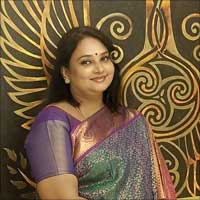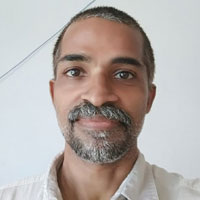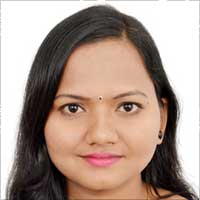Greater Triad
1. Charaka samhita
2. Susruta samhita
3. Astanga Sangraha
The three treatises of Charaka, Sushruta and Vagbhatta , called "Greater triad" are very important texts in Ayurveda.
Charaka samhita
Charaka was a physician who was always traveling. He was a disciple of Agnivesha who wrote the Atreya Samhita. Charaka rewrote the Agnivesha samhita (in about 1000 BC). Around 400 AD, Drdabala worked upon charaka samhita and re-formed it. This re-formed version of Drdabala is available to us as the "Charaka samhita".
Many chapters in Charaka samhita are in the form of symposiums; where in groups of sages take in certain topics for discussion. The text, which is written in Sanskrit, is in the form of prose and verses. It contains 8,400 metrical sentences. The focus is on "Kaya chikitsa" the internal medicine, which aims to balance the "Agni",or the digestive fire, responsible for metabolism.
Susruta samhita
The word "Susruta" means "one who listens very well". Susruta was a surgeon. He was the disciple of Divodasa Dhanvantari of the Dhanvantari lineage. The text belongs to around 6th century BC. Due to his contribution to surgery he is termed as "Father of surgery."
Later, around the 2nd century BC, the text was re-edited by Nagarjuna. The text explains various surgical procedures and includes techniques to repair torn ear lobe, cleft palate and disfigured nose, uniting the torn intestines, removal of prostrate gland, removal of cataract, draining of abscesses and also some surgical procedures in the brain. He has explained about the dissection of cadavers and the method to preserve them besides describing 101 kinds of blunt instruments (yanra) and 20 kinds of sharp instruments (shastra).
Ashtanga Sangraha
Around 5th century AD, Vagbhatta compiled a treatise named Ashtanga sangraha. It combines both the above treatises, explaining all the 8 parts of Ayurveda including, Kaya chikitsa (internal medicine) and Shalya tantra (surgery).
Ashtanga sangraha excels in explaining the basic concepts of Ayurveda. It explains all the basics of Ayurveda, such as the
• Theory of 5 elements (panchamahabuta tatva)
• Theory of 3 functional principles (tridosha siddhanta)
• Theory of 7 structural principles (sapta dhatu tatva)
• Theory of 6 tastes (shad rasa siddhanta)
Seeing that the text Ashtanga sangraha is very elaborate the same author Vagbhatta has also written a text called 'Ashtanga hrdayam'. Ashtanga hrdayam is more concise; it covers all the 8 parts of Ayurveda.
Ashtanga sangraha is written in both prose and in the poetry form while Ashtanga hrdayam is completely written in poetry form, which is easy to memorize.
1. Charaka samhita
2. Susruta samhita
3. Astanga Sangraha
The three treatises of Charaka, Sushruta and Vagbhatta , called "Greater triad" are very important texts in Ayurveda.
Advertisement
Charaka samhita
Charaka was a physician who was always traveling. He was a disciple of Agnivesha who wrote the Atreya Samhita. Charaka rewrote the Agnivesha samhita (in about 1000 BC). Around 400 AD, Drdabala worked upon charaka samhita and re-formed it. This re-formed version of Drdabala is available to us as the "Charaka samhita".
Advertisement
Many chapters in Charaka samhita are in the form of symposiums; where in groups of sages take in certain topics for discussion. The text, which is written in Sanskrit, is in the form of prose and verses. It contains 8,400 metrical sentences. The focus is on "Kaya chikitsa" the internal medicine, which aims to balance the "Agni",or the digestive fire, responsible for metabolism.
Advertisement
Susruta samhita
The word "Susruta" means "one who listens very well". Susruta was a surgeon. He was the disciple of Divodasa Dhanvantari of the Dhanvantari lineage. The text belongs to around 6th century BC. Due to his contribution to surgery he is termed as "Father of surgery."
Later, around the 2nd century BC, the text was re-edited by Nagarjuna. The text explains various surgical procedures and includes techniques to repair torn ear lobe, cleft palate and disfigured nose, uniting the torn intestines, removal of prostrate gland, removal of cataract, draining of abscesses and also some surgical procedures in the brain. He has explained about the dissection of cadavers and the method to preserve them besides describing 101 kinds of blunt instruments (yanra) and 20 kinds of sharp instruments (shastra).
Ashtanga Sangraha
Around 5th century AD, Vagbhatta compiled a treatise named Ashtanga sangraha. It combines both the above treatises, explaining all the 8 parts of Ayurveda including, Kaya chikitsa (internal medicine) and Shalya tantra (surgery).
Ashtanga sangraha excels in explaining the basic concepts of Ayurveda. It explains all the basics of Ayurveda, such as the
• Theory of 5 elements (panchamahabuta tatva)
• Theory of 3 functional principles (tridosha siddhanta)
• Theory of 7 structural principles (sapta dhatu tatva)
• Theory of 6 tastes (shad rasa siddhanta)
Seeing that the text Ashtanga sangraha is very elaborate the same author Vagbhatta has also written a text called 'Ashtanga hrdayam'. Ashtanga hrdayam is more concise; it covers all the 8 parts of Ayurveda.
Ashtanga sangraha is written in both prose and in the poetry form while Ashtanga hrdayam is completely written in poetry form, which is easy to memorize.









